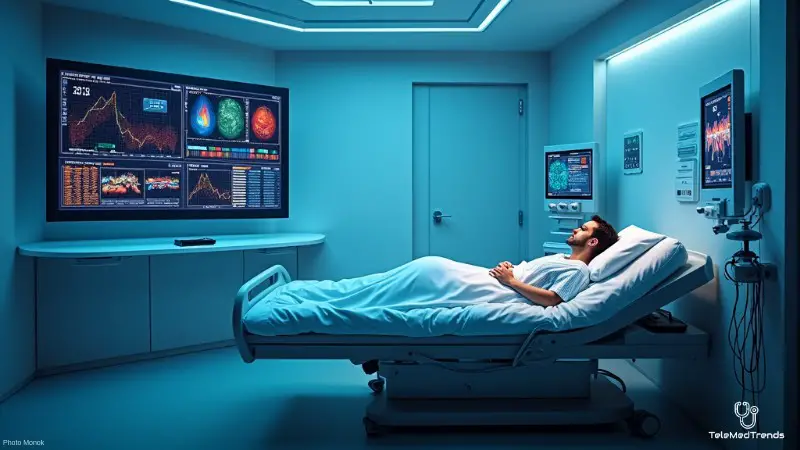The worldwide healthcare sector is expected to grow to be worth over US $800 billion by 2033, spurred by developments in telemedicine, 5G technology, and artificial intelligence. These advancements are enabling more efficient care management, improving patient access, and drastically altering the way healthcare is delivered.
In particular, 5G and telemedicine play a key role in these developments since they hold the promise of enabling more dependable remote care and virtual consultations, which will enhance results globally.
Key Takeaways
Advancements in telemedicine, 5G technology, and artificial intelligence will revolutionize the future of healthcare by enabling more efficient care management, improving patient access, and altering the way healthcare is delivered.
- More than 78% of healthcare facilities worldwide are updating their networks to provide faster, more reliable access to telemedicine services using 5G technology.
- By the end of 2025, over two-thirds of healthcare facilities intend to implement network segmentation technology to improve data management and efficiency, enabling advanced telemedicine services like telesurgery and remote consultations.
- AI-powered telemedicine is rapidly advancing, with Remote Patient Monitoring (RPM) programs covering over 69% of healthcare facilities in North America and Europe, reducing hospital readmissions by about 22%.
The role of 5G and telemedicine in healthcare
5G technology has a huge impact on healthcare infrastructure. Over 78% of healthcare facilities worldwide are updating their networks to provide faster, more reliable access to telemedicine services. The reliability of remote healthcare consultations, particularly complex ones, is a critical goal.
By the end of 2025, more than two-thirds of healthcare facilities intend to implement network segmentation technology to improve data management and efficiency. This will improve patient care by enabling more advanced telemedicine services, such as telesurgery and remote consultations.
Furthermore, edge computing technology is gaining popularity, notably in Asia-Pacific, where over 40% of upmarket hospitals deploy 5G-enabled edge servers for real-time imaging and AI-driven diagnostics.
The future of virtual care and AI-driven telemedicine
AI-powered telemedicine is rapidly advancing, with Remote Patient Monitoring (RPM) programs now covering over 69% of healthcare facilities in North America and Europe. These programs are crucial in managing chronic conditions like heart failure and COPD, and their adoption has surged in the past year. RPM services are expected to reduce hospital readmissions by about 22%, highlighting their impact on patient outcomes.
Looking ahead, AI will drive further improvements in telemedicine by enhancing the accuracy and personalization of care. By 2025, advanced AI-driven technologies in operating rooms are expected to streamline healthcare, reduce readmissions, and improve overall patient outcomes.






